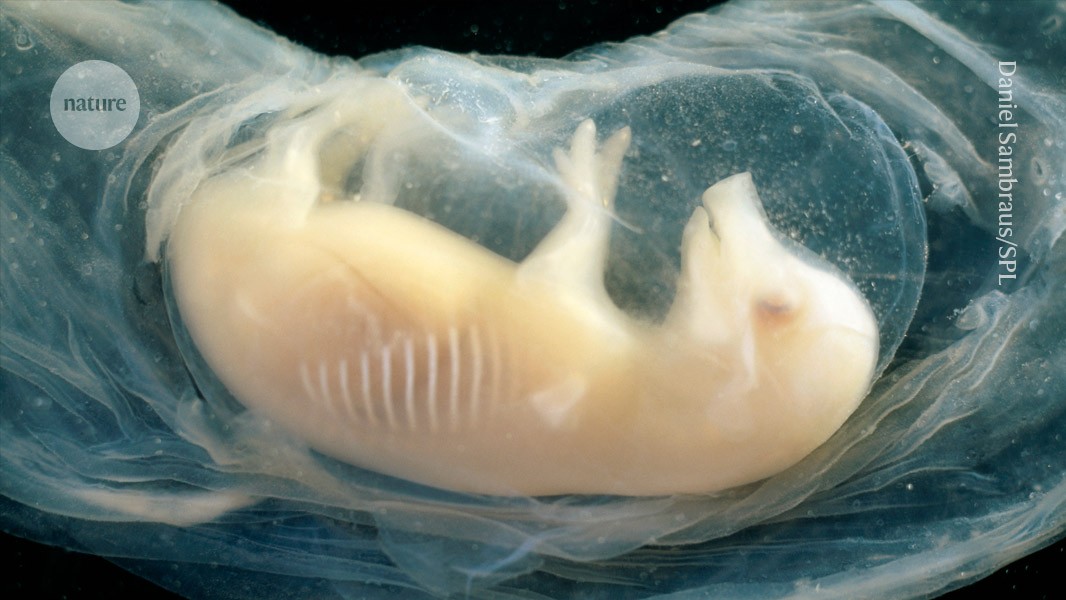Tiny human hearts grown in pig embryos for the first time

The hearts started to beat in the pig–human hybrids, which survived for 21 days

Pig embryo at 33 days. Pig embryos with human heart cells have survived for 21 days.Credit: Daniel Sambraus/Science Photo Library
Researchers have reported growing hearts containing human cells in pig embryos for the first time. The embryos survived for 21 days, and in that time their tiny hearts started beating. The findings were presented this week at the annual meeting of the International Society for Stem Cell Research in Hong Kong.
Scientists developing human–animal chimaeras grow human cells in animal embryos, with the aim of one day generating animals with human organs that can be transplanted into people. This could provide a way to address the global shortage of organs for transplantation.
One approach to developing chimaeras involves creating animal embryos that lack some of the genes needed to produce a specific organ, such as the heart. Human stem cells are then injected into the embryos, with the hope that the human cells — rather than those of the animal – will form that organ. Several groups have used this method to grow human muscle and blood-vessel cells in pig embryos.
Pigs are a suitable donor species because the size and anatomy of their organs are comparable with those of humans, says Lai Liangxue, a developmental biologist at the Guangzhou Institutes of Biomedicine and Health, Chinese Academy of Sciences, who led the latest work. Lai’s team has previously grown early-stage human kidneys in pig embryos that survived for up to a month in pregnant sows. He wanted to see whether similar results were possible for the heart.
Beating heart
In their study, which has not been peer-reviewed, Lai and his team reprogrammed human stem cells to bolster their ability to survive in a pig, by introducing genes that prevent cell death and enhance cell growth. They then generated pig embryos in which two specific genes that have key roles in heart development were knocked out. A handful of human stem cells were introduced into the pig embryos at the morula stage, soon after fertilization — a point at which the embryo consists of a ball of about a dozen cells that are rapidly dividing. The embryos were then transferred to surrogate pigs.
The team found that the embryos grew for up to 21 days, after which they did not survive. Lai says it’s possible the human cells disrupted the function of the pig hearts.
When the researchers took a closer look at the embryonic hearts, they found that they had grown to the equivalent size of a human heart at that stage of development — the size of a fingertip — and were beating, says Lai. The human cells could be identified because they had been tagged with a luminescent biomarker and were glowing, he adds.
Enjoying our latest content?
Login or create an account to continue
- Access the most recent journalism from Nature's award-winning team
- Explore the latest features & opinion covering groundbreaking research
or
Sign in or create an accountdoi: https://doi.org/10.1038/d41586-025-01854-x
This story originally appeared on: Nature - Author:Smriti Mallapaty


















